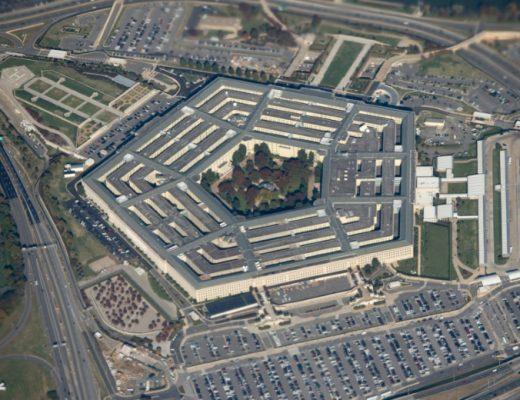As the race for military superiority continues to evolve, the Pentagon has set its sights on hypersonic weapons as the next frontier in modern warfare. However, with reports of ballooning costs and questionable effectiveness, many are beginning to question whether the billions of dollars being poured into these advanced weapons systems are truly worth the investment. In this article, we delve into the debate surrounding the Pentagon’s hypersonic ambitions and explore whether this cutting-edge technology is a game-changing asset or a costly boondoggle.
The Race for Hypersonic Weapons: Are Costs Justified?
One of the most pressing questions in defense circles today is whether the Pentagon is wasting billions on developing hypersonic weapons. These weapons, which can travel at speeds of Mach 5 or more, have been touted as the next big thing in military technology. Proponents argue that they could revolutionize warfare by allowing for faster, more precise strikes against enemy targets. However, critics question whether the enormous costs associated with developing and deploying these weapons are justified.
On one hand, supporters of hypersonic weapons point to the potential strategic advantages they offer. The ability to strike targets anywhere in the world within minutes could give the U.S. military a significant edge over its adversaries. Additionally, hypersonic weapons are capable of penetrating even the most sophisticated air defense systems, making them a valuable asset in modern conflicts. However, opponents argue that the high costs of developing and deploying these weapons could be better spent on other defense priorities, such as improving cybersecurity or investing in more traditional military capabilities.
Analyzing the Effectiveness of Pentagons Investment
After pouring billions of dollars into developing hypersonic weapons, the Pentagon is facing scrutiny over the effectiveness of these investments. Recent reports suggest that the development of hypersonic weapons has been plagued with delays and cost overruns, raising questions about whether the Pentagon is wasting valuable resources on a technology that may not live up to its promises.
One of the main concerns is whether hypersonic weapons will actually provide the United States with a strategic advantage over its adversaries. While these weapons have the potential to travel at incredible speeds and evade traditional missile defenses, there are doubts about their reliability and accuracy. Additionally, critics argue that the focus on hypersonic weapons may be diverting attention and funding away from other crucial defense priorities. the effectiveness of the Pentagon’s investment in hypersonic weapons remains a topic of debate within military and defense circles.
Challenges and Limitations of Developing Hypersonic Weapons
Technical Challenges:
Developing hypersonic weapons poses numerous technical challenges that can hinder progress and increase costs. These challenges include:
- Managing extreme heat generated during flight
- Ensuring structural integrity at high speeds
- Guiding weapons accurately to their targets
- Addressing propulsion systems that can withstand hypersonic speeds
Financial Limitations:
The development of hypersonic weapons requires significant financial resources, with some estimates suggesting that the Pentagon is spending billions of dollars on research and development. This raises concerns about whether the investment is justified, especially considering the high costs and uncertain outcomes associated with developing these advanced weapons. Additionally, budget constraints may limit the scope and pace of hypersonic weapon development, potentially delaying deployment and reducing the overall effectiveness of the program.
Proposed Changes to Streamline Funding and Development
Do hypersonic weapons represent the future of military technology, or are they just a costly boondoggle? With the Pentagon investing billions in the development of these high-speed weapons, many are questioning whether the hefty price tag is justified. Proponents argue that hypersonic weapons offer unmatched speed and precision, giving the US military a strategic advantage over its adversaries. However, critics point to the exorbitant cost of these weapons and question whether they are truly necessary in today’s rapidly evolving geopolitical landscape.
As the debate rages on, some are calling for a reevaluation of the Pentagon’s funding priorities. Could reallocating resources from hypersonic weapons to other areas lead to more effective military capabilities? By streamlining funding and development processes, the Pentagon could potentially save billions while still maintaining a strong national defense. Ultimately, the decision lies in whether the US military should continue to pour money into cutting-edge technologies like hypersonic weapons, or if it’s time to reconsider its approach to defense spending.
In Summary
the debate surrounding the Pentagon’s investment in hypersonic weapons continues to spark controversy and raise important questions about the allocation of defense funds. While some argue that the technology is vital for maintaining a strategic edge in modern warfare, others question the cost-effectiveness and practicality of these high-speed weapons. As the discussion evolves, it is crucial for policymakers and military leaders to carefully weigh the potential benefits and drawbacks of pursuing hypersonic capabilities. Only time will tell if these investments will prove to be a wise use of taxpayer dollars or if billions will indeed be wasted on technology that may not live up to its hype. The future of hypersonic weapons remains uncertain, and the debate is far from over. Let us continue to follow developments in this rapidly advancing field with cautious optimism and a critical eye.


